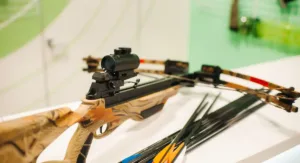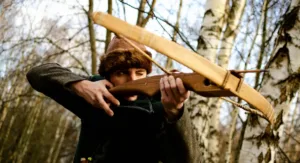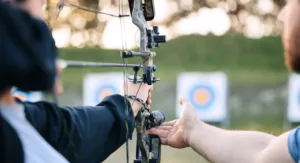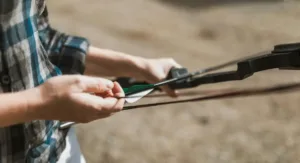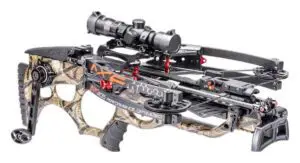Archery is an ancient art form that has endured through the centuries and requires precision and mastery. The anatomy of a bow, a complex interplay of components and design, plays a pivotal role in this captivating skill. Our aim in this exploration is to uncover the secrets behind the anatomy of bow, from its historical roots to its significance today.
Introduction
Definition of Anatomy Of a Bow
In archery, understanding these elements is crucial to mastering the technique. Anatomy of bow comprises various components that are essential to its functionality.
Historical Significance
As a part of human history, anatomy of a bow have been integral to hunting, warfare, and recreation. Understanding their historical significance allows us to understand evolution.
Importance in Various Cultures
The anatomy of bow has a broad range of symbolic meanings and practical applications in different cultures. Understanding the bow’s role in various societies deepens our understanding of the world.
Bow Components
Bowstring
During shooting, bowstrings transfer power from one point to another. Most bowstrings are made from durable materials such as Dacron or Fast Flight.
Limbs
Flexible limbs act as the bow’s wings, storing and releasing energy while drawing and releasing the string.
Riser
As the archer grips the handle, the central part of the bow is the riser, which provides stability and grip.
Grip
The bow’s grip, where the archer holds it, is carefully designed to provide comfort and control.
Nocking Point
Through the nocking point, a minor groove is found on the bowstring, and precise placement of the arrow can be achieved.
Types of Bows
Longbow
Medieval archery is reminiscent of the traditional longbow with a straight, simple design.
Recurve Bow
A recurve bow’s curved tips enhance power and speed, making it a favorite of modern archers.
Compound Bow
Robust and accurate, the compound bow features cutting-edge engineering.
Crossbow
This crossbow has an innovative design that makes it easy to use. It is mounted on a stock and has a horizontal bow mounted on it.
Traditional Bow
There is a simplicity and ancestral practice associated with traditional bows.
Materials Used in Bow Making
Wood
A wooden bow is regarded as authentic and aesthetic by traditionalists.
Fiberglass
Fiberglass is a popular modern bow material because of its strength and flexibility.
Carbon Fiber
Modern bows utilize lightweight and durable carbon fibre to maximize performance.
Metal Alloys
Bows made of metal alloys are powerful and precise.
The Physics Behind Bow Functionality
Energy Storage and Release
Archers seeking accuracy and power must understand how bows store and release energy.
Arrow Speed and Kinetic Energy
An arrow’s speed and kinetic energy depend on the bow’s design and the archer’s technique.
Draw length and weight
Bows can be customized to the archer’s physique and preferences by adjusting draw length and weight.
Bow Maintenance and Care
String Waxing
Keeping bowstrings waxed regularly ensures their long-term durability and optimal performance.
Limb inspection
It is essential to inspect the limbs regularly to prevent damage and maintain the integrity of the bow.
Proper storage.
When bows are stored correctly, they are protected from environmental factors, which prolongs their lifespan.
Cultural Significance
Traditional hunting practices
Bows have been pivotal in traditional hunting practices, fostering a deep relationship between humans and nature.
Sporting events
Throughout history, archery has evolved into a sport celebrated worldwide, where precision and skill are exhibited in events.
Ceremonial Use
Bows play an essential role in ceremonies and rituals by symbolizing strength, honour, and tradition.
Evolution of Bow Design
Historical progression
Archers have demonstrated their ingenuity throughout history by improving bow design over time.
Modern Innovations
Incorporating cutting-edge technologies and materials, contemporary bow designers continue to push boundaries.
Choosing the Right Bow
The purpose of Use
Firstly, it must be knowing what the primary Use will be: hunting, target practice, or competition.
Skill Level
A bow should be selected based on the archer’s skill level so that they can learn and shoot as efficiently as possible.
Bow Weight and Draw Length
Having a bow with a customized weight and draw length is more comfortable and accurate.
Bow Safety Measures
Proper shooting techniques
To ensure the archer’s safety and that of those around them, it is imperative that archers learn and practice proper shooting techniques.
Safety Gear
Archers are protected from potential injuries by wearing safety gear such as arm guards and finger tabs.
Adherence to Regulations
Understanding and adhering to archery regulations ensures a safe and responsible experience.
Conclusion
It is essential to note that a anatomy of a bow comprises several intricate components that contribute to its functionality. They represent the past and the future, giving it a rich and fascinating history. The art and significance of anatomy of a bow continue to be admired by bow enthusiasts for centuries since it is recognized as the finest bow in history based on its artistry and importance.
Frequently Asked Questions (FAQs)
What is the best bow for beginners?
It is essential to consider factors such as purpose, skill level, and personal preference when picking a bow for a beginner. Recurve bows are often recommended as a good choice because they are both simple and versatile.
How often should I wax my bowstrings?
Depending on usage, you should wax your bowstring every 2-4 weeks or whenever it appears dry and fuzzy.
Is recreational archery regulated?
Different regions may have specific archery laws and guidelines. Being familiar with local laws and policies is essential to ensuring a safe and legal experience.
Why does draw weight matter for bows?
Archers’ accuracy and arrow speed are affected by the draw weight, which is the force required to pull the bowstring to its maximum draw length.
What other uses can bows be put to besides hunting and sports?
There is no doubt that bows have a cultural and ceremonial significance. They are also used in many forms of entertainment, including films and theatre.
Recommended Articles
- A Complete Guide To Essential Parts Of A Crossbow
- A Comprehensive Guide To Pick Best Budget Crossbows
- A Comprehensive Samick Sage Review For Beginner Archers
- An Ultimate Bow Size Chart Guide For Archers
- Avoiding Pitfalls – Your Ultimate Guide To Perfect Bow Brace Height
- Axe 405 Crossbow Problems: Overcoming Common Problems


